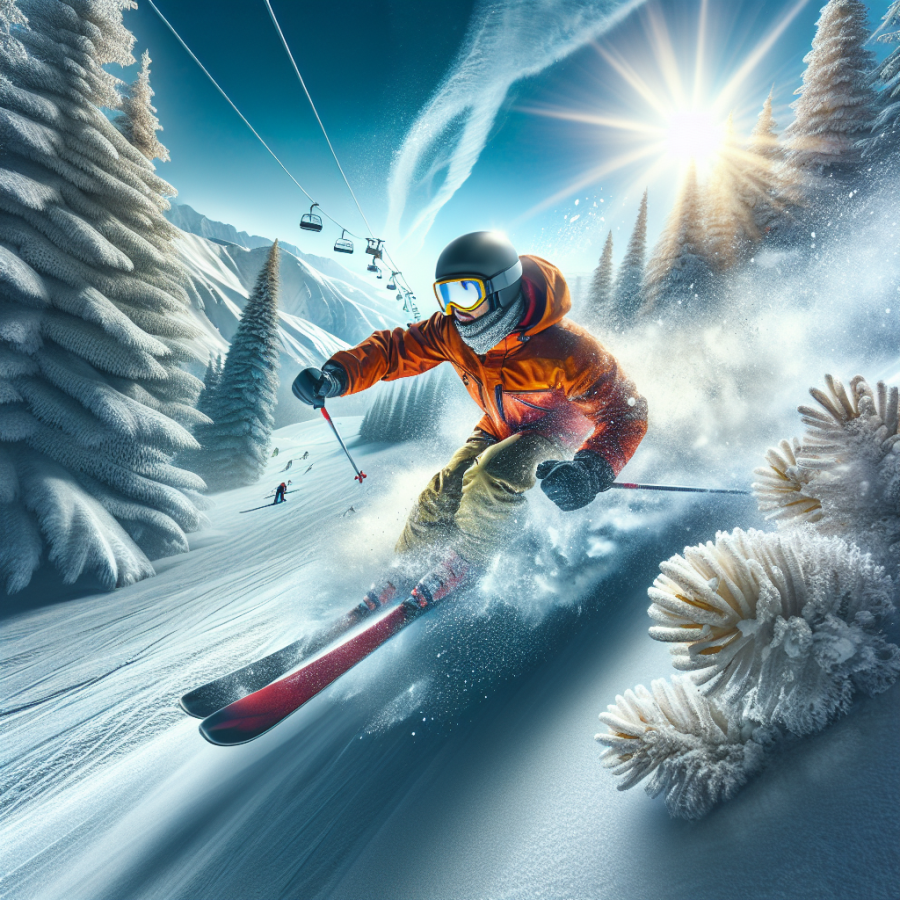Navigating Your First Descents: Tips and Tricks for Skiing Beginners
Embarking on your first few descents on the snowy slopes can be both exhilarating and intimidating. To make your initial forays into skiing more enjoyable and less daunting, it’s vital to arm yourself with some practical tips and tricks that cater to skiing novices. The journey to conquering the slopes takes patience and perseverance, but with these guidelines, you can enhance your learning curve and set yourself up for successful skiing adventures.
**Start Small and Manage Your Expectations**
When new to skiing, it's essential to start with gentle slopes. Look for a beginner-friendly area with mild inclines that will allow you to practice balance and basic techniques without the fear of steep grades. Managing your expectations is equally important; understand that mastering skiing takes time, and it’s okay to make mistakes along the way. Accept that falls are part of the learning process and see them as stepping stones to improvement.
**Get to Grips with Your Gear**
It's crucial to familiarize yourself with your skiing equipment. Get comfortable with putting on and taking off your skis and practice using the bindings. Make sure your boots are well-fitted and comfortable. Comfortable and properly fitted gear not only enhances your experience but can also improve your control and reduce the risk of injury.
**Master the Basic Moves**
Before heading down the slope, learn the fundamental moves. Start with the 'snowplow' or 'pizza’ technique to slow down or stop, where the tips of your skis are together, and the tails are wide apart. Practice shifting your weight from one ski to another to initiate turns. Once you can control your speed and direction, experiment with parallel turns, which are more efficient and effective for navigating steeper terrain.
**Understand Slope Etiquette**
Knowing the rules of the slopes is paramount. Always stay in control and be able to stop to avoid injury to yourself and others. Be aware of skiers ahead of you; they have the right of way. Also, be mindful of your surroundings and signals, especially when merging onto a trail or starting downhill.
**Take Lessons from a Professional**
Consider taking a few lessons from a certified ski instructor. Professional guidance can make a significant difference in how quickly you progress. An instructor will provide personalized feedback and tailor the lessons to your skill level, helping you to overcome specific challenges effectively.
**Condition Your Body**
Skiing is a physically demanding sport, so it's beneficial to prepare your body for the activity.
Read also:
Glacial Grace: Unveiling the Wonders of Ice Theatre
Mastering the Basics of Skiing: From Gear to Technique
Mastering the fundamentals of skiing is essential if you are committed to conquering the slopes and enjoying the full skiing experience. Your journey from novice to confident skier involves understanding the necessary gear and learning the proper techniques.
Starting with the gear, your first essential item is a pair of skis. Skis come in various lengths and styles, tailored to different skill levels and terrain types. Beginners should opt for shorter skis as they are easier to control. The boots are equally important; they need to fit snugly but comfortably, providing ample support for your ankles. When it comes to bindings, which secure your boots to the skis, safety is paramount. Ensure that they are adjusted correctly to your weight and skill level to allow for proper release in the event of a fall.
Proper clothing is another cornerstone of skiing basics. You'll need waterproof and insulated ski pants, a jacket, gloves or mittens, and quality socks to avoid blisters. A helmet is a must for protecting your head, while goggles will shield your eyes against the sun and wind.
Once you are geared up, understanding the foundation of skiing technique is your next step. The quintessential stance for skiing is with your skis parallel, knees slightly bent, and your weight balanced. For turning, you'll learn the snowplow or wedge technique as a beginner, which involves pointing the tips of your skis together, tails apart, to slow down or stop.
Balance and control are your primary objectives in the early stages. Learning how to shift your weight from one ski to the other allows for smooth turning and overall stability. Exercises such as side-stepping up a slope and practicing the herringbone technique, walking up the hill with your skis in a V-shape, can significantly improve your balance and leg strength.
As you advance, you'll replace the snowplow with parallel turns and carving, where both skis remain parallel through the turn, enabling more speed and control. However, before attempting steeper slopes, making sure you have a solid grasp on these fundamental techniques and can perform them confidently on gentler terrain is essential.
Remember, skiing is as much about technique as it is about feeling the rhythm of the slopes. Listen to your body, pay attention to your environment, and most importantly, be patient with yourself. It takes time to master the basics, but with practice and perseverance, you'll find yourself making swift progress down the slopes with greater confidence and enjoyment.




